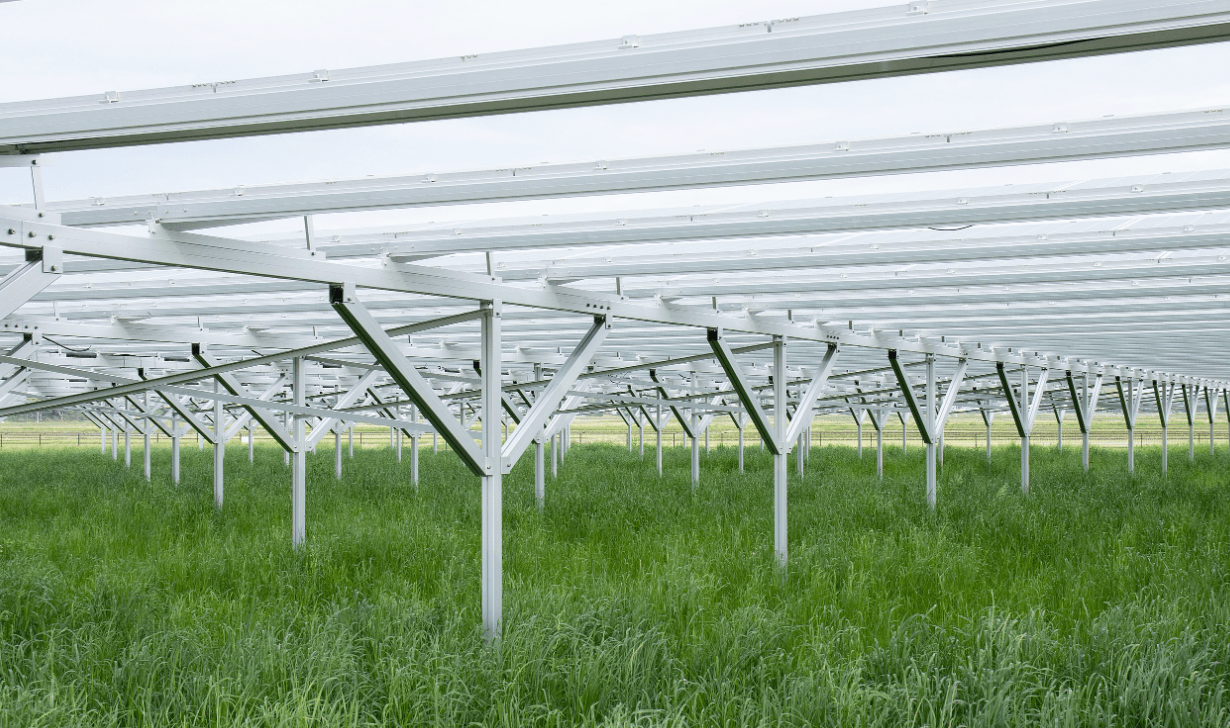Feb 3, 2023
Which States Offer Solar Incentives for Farmers?

Credit: HelloDavidPradoPerucha.
As farmers look for ways to increase their income and reduce their environmental footprint, agrivoltaics, or the integration of solar panels into agricultural production systems, has become an increasingly popular option. By installing solar panels above croplands or pastures, or by incorporating them into structures such as greenhouses or barns, farmers can produce both food and energy on the same land.
However, the upfront cost of installing a solar energy system can still be a barrier for many farmers. That's where solar incentives come into play. Solar incentives are financial support offered by governments and utility companies to encourage the adoption of solar energy, including agrivoltaics.
In this article, we will focus specifically on places in the United States that have solar incentives for farmers, and how they can take advantage of them to make the transition to agrivoltaics easier and more affordable.
The Future of Agrivoltaics: Smart Agrivoltaics Systems

Credit: Leaders in Energy.
As the technology for agrivoltaics becomes more advanced, more farmers are realizing the benefits of utilizing these systems on their farms. One of the most interesting developments in the world of agrivoltaics is the increasing use of "smart agrivoltaics" systems. These systems use sensors and automation to optimize the growth of crops and the generation of electricity from the solar panels. By adjusting factors such as shading, irrigation, and temperature, smart agrivoltaics systems can increase crop yields while also increasing the efficiency of the solar panels.
This technology is still in its early stages, but it has the potential to revolutionize the way that farmers produce food and energy. Several research institutions and private enterprises are developing and testing smart agrivoltaics systems, and it is expected that these systems will become more available in the coming years. By adopting these technologies, we can create a more climate-resilient future and lessen reliance on fossil fuels in agriculture. Solar energy is not a perfect solution, however, so it is important to review all of your options before deciding on the right solution for any given farm.
Solar Incentives in the United States
Solar incentives can help reduce the upfront cost of installing a solar energy system, making it more accessible and affordable for farmers. There are several types of solar incentives available in the United States, including:
Tax credits: A tax credit is a dollar-for-dollar reduction in the amount of income tax a person or business owes. Many states offer solar tax credits to encourage the adoption of agrivoltaics systems.
Rebates: A rebate is a direct payment to a person or business that has installed a solar energy system. Rebates can be offered by states, utility providers, or other organizations, and can be used to help cover the cost of installing agrivoltaics systems.
Grants: A grant is a financial award that does not need to be repaid. Grants can be used to help cover the cost of installing agrivoltaics systems.
Loan programs: Loan programs can provide financing for the installation of agrivoltaics systems. These loans may be offered at a reduced interest rate or with other favorable terms.
In addition to these incentives, there are also federal-level incentives available to farmers in the United States. The Federal Investment Tax Credit is a tax credit that allows farmers to claim a credit for 26% of the cost of their solar energy system, including agrivoltaics systems.
Top States with Solar Incentives for Farmers

Credit: wayhomestudio.
The availability and terms of solar incentives vary widely from state to state. Generally speaking, though, most states offer some kind of incentive or rebate program designed to help offset the cost associated with installing a new system or upgrading existing ones. Here are some details on the states with the most rewarding incentives
California
The Self-Generation Incentive Program (SGIP) provides financial incentives to California residents who install renewable energy systems, including agrivoltaics systems. SGIP is administered by the California Public Utilities Commission and is funded by ratepayers.
Colorado
The Solar*Rewards program provides financial incentives to Colorado residents who install solar energy systems on their homes or businesses. The program is administered by Xcel Energy and is funded by a surcharge on customer bills.
The Renewable Energy Standard (RES) requires that a certain percentage of the electricity sold in Colorado come from renewable energy sources, including solar. The RES provides financial incentives to renewable energy producers, including agricultural producers who install agrivoltaics systems.
Missouri
The Energize Missouri Agriculture Program is a government-funded program that offers grants to aid farmers in lowering their energy costs through the adoption of renewable energy sources.
Missouri’s Renewable Portfolio Standard requires that a certain percentage or amount (in MWh) of energy sold by utility providers be fueled by renewable sources. The rate increases over time, aiming to support the state in the adoption of more climate-resilient energy technologies.
EcoWatch offers information about how to take advantage of solar incentives in Missouri and offers contact details for trusted solar providers in the area.
Connecticut
The Solar for All program provides financial incentives to Connecticut residents who install solar energy systems on their homes or businesses. The program is administered by the Connecticut Department of Energy and Environmental Protection and is funded by the state's Renewable Portfolio Standard.
The Zero Emission Renewable Energy Credit (ZREC) program provides financial incentives to Connecticut residents who generate electricity from renewable energy sources, including solar. The ZREC program is administered by the Connecticut Department of Energy and Environmental Protection and is funded by the state's Renewable Portfolio Standard.
Other states with solar incentives for agricultural producers include Delaware, Illinois, Massachusetts, Minnesota, New York, North Carolina, Ohio, and Pennsylvania. These states offer a variety of solar incentives, including tax credits, rebates, grants, and loan programs for agrivoltaics systems.
The adoption of agrivoltaics on farms not only helps to reduce the carbon footprint of agriculture, but it can also provide a reliable and cost-effective source of electricity for farms as well as an additional source of income.
These incentives, which can include tax credits, rebates, grants, and loan programs, can help reduce the upfront cost of installing an agrivoltaics system and make the transition to solar power more affordable for agricultural producers. It's important to note that these incentives can vary from year to year and some are time-limited. So, be sure to stay updated on the currently available incentives and act quickly when they become available.
